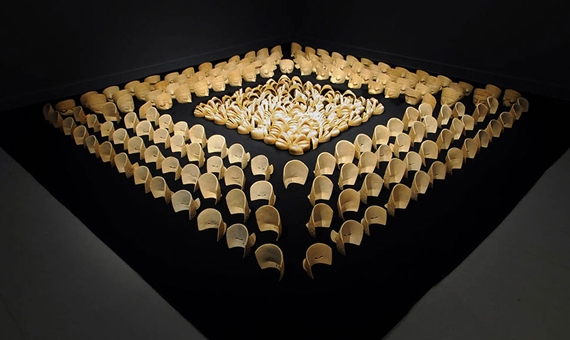Interview: Introducing 'After Darkness: Southeast Asian Art in the Wake of History'

Does art have the power to change the world? Or does the world shape the evolution of art? These questions have informed the work of an extraordinary group of artists featured in After Darkness: Southeast Asian Art in the Wake of History, Asia Society Museum's fall exhibition.
Featuring seven contemporary artists and one artist group from Myanmar, Indonesia, and Vietnam, the artwork provides a glimpse at the dramatic changes these countries have experienced in the past half-century — changes that the artists have both shaped and reflected.
The exhibition opens today and will be on display at Asia Society Museum through January 21, 2018. While you plan your visit, be sure to check out the exhibition page for more detail about the artists as well as images of their work. You can also pre-order the catalog from AsiaStore.
In order to dig a little deeper at the themes present in After Darkness, we caught up with Boon Hui Tan, Asia Society's vice president for Global Arts and Cultural Programs and the director of Asia Society Museum; and Michelle Yun, senior curator of Asian and professional art, for a brief interview.
How did the idea for After Darkness come about? How did you select the artists to include?
Boon Hui: It came out of a discussion on what art and artists should do in our contentious present-day. The world seems to be changing too rapidly, and sometimes not in ideal ways, so it really called into question whether art was able to do anything at all. This led to the idea of looking at other countries and historical periods of political change and how the artists at that time responded to them.
Michelle: We decided to focus on countries in Southeast Asia that had gone through dramatic sociopolitical changes in their modern histories as a way to narrow the scope and settled on Indonesia, Myanmar, and Vietnam. Within these countries, we focused on artists whose artistic practices responded to these societal shifts and who were not afraid to tackle sensitive issues with a critical perspective.
We also wanted to showcase more senior artists whose practices have evolved over time in response to the societal upheaval they experienced, balanced by the inclusion of a couple of emerging artists who have benefited from the legacy of the generation who came before them.
What themes bind together the artists and nationalities presented?
Boon Hui: Love and passion. All the artists are so tied to the lands of their birth and feel strongly that the history and the experiences of their people, no matter how traumatic, must not be forgotten. In the end, the show is optimistic: It reminds us that bad things pass and people and cultures endure. Many of the works are memorials, testimonies of important experiences that the artists feel should not be forgotten as history unfolds.
Michelle: The artists in the exhibition come from a broad spectrum of experience and work with a wide range of mediums from sculpture, video, photography, and installation. An underlying thread to these diverse practices is an awareness and willingness to engage with the world around them through their work and a fearlessness to illuminate injustice and inequalities among their fellow citizens.
Political activist art differs from conventional art in that it attempts to shape, rather than simply reflect, the societies in which they’re created. How do you think the work of the artists included in After Darkness affected individuals in Indonesia, Vietnam, and Myanmar?
Boon Hui: Their work is above all a historical record of very complex issues and experiences that have still not been worked through in the general society. For those of us working in art, this show is a reminder that unlike some Western art trajectories, a lot of art-making in Asia has a distinct social ethic and a belief that artists should champion the oppressed and the people without a voice and history. That I think is a vital point in our current times. At the same time, the works are formally very beautiful even as they are ferocious and emotional.
Michelle: Many of the senior artists in the exhibition have served as mentors to the younger generation of artists and have been proactive in creating an infrastructure for contemporary art scenes to develop within their respective countries. Their work provides a platform on which the experiences of contemporary society within their respective countries may be concretely recognized and discussed.
After Darkness arrives 21 years after Traditions/Tensions, a landmark Asia Society exhibition that covered a similar geographic area. How do the two exhibitions now complement each other?
Boon Hui: The works in this show demonstrate how far the art scenes of Southeast Asia have evolved, both in the artist’s mastery of form and materials, but also ideas and the confidence with which their voices are shared. This is a show about the now, the pulse of what drives a lot of art in this region right now and what keeps artists awake at night.
Michelle: Traditions/Tensions was, in most cases, the first time contemporary art and artists from South and Southeast Asia were introduced to American audiences. After Darkness has benefited from this early exposure and continues the dialogue about work from Southeast Asia through a more nuanced and focused lens.
